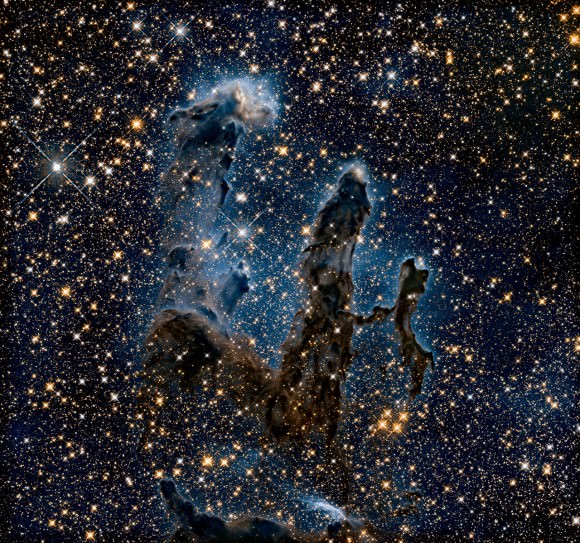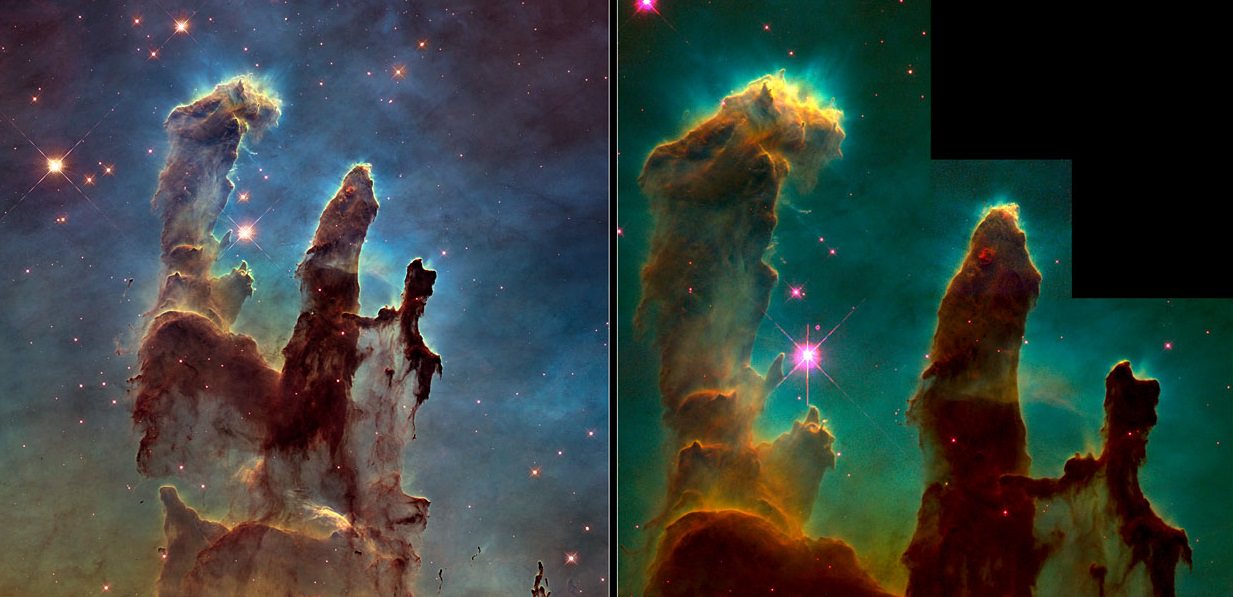When you look at that image on the right, make sure to thank the STS-125 crew. And all the people who defended the idea of sending one last repair mission to the Hubble Space Telescope before the space shuttle was decommissioned.
That’s because the famous “Pillars of Creation” image taken in 1995 by Hubble just got a huge upgrade. Using a camera the astronauts installed in 2009, astronomers recently revisited the iconic image and got far more detail this time around. And please, do yourself a favor to click through and see the ethereal infrared image Hubble got at the same time.
Embedded in these Eagle Nebula towers, which are sometimes called elephant trunks, are stars under creation. And in a short span of 20 years, you can see how the stars are slowly blowing the pillars apart. This is leading some press officials to call the structures “pillars of destruction.” And astronomers can chart how everything is changing over time.
“I’m impressed by how transitory these structures are. They are actively being ablated away before our very eyes,” stated Paul Scowen of Arizona State University in Tempe, one of the astronomers who led the 1995 observations.

“These pillars represent a very dynamic, active process,” Scowen added. “The gas is not being passively heated up and gently wafting away into space. The gaseous pillars are actually getting ionized (a process by which electrons are stripped off of atoms) and heated up by radiation from the massive stars. And then they are being eroded by the stars’ strong winds (barrage of charged particles), which are sandblasting away the tops of these pillars.”
One large find from the two images showed a “narrow jet-like feature” that could have been emanating from a brand-new star. It’s been getting larger over the past two decades, moving more than 60 billion miles further into the universe.
The new images were presented at the American Astronomical Society meeting in Seattle this week.
Sources: Hubble European Space Agency Information Centre and Space Telescope Science Institute


Imagine the imaging possibilities out there that we’re simply not capturing. Like massive space telescopes taking pictures like this every week for 20 years and assembling those frames to create a movie. Or actually seeing detail on extra solar planets. It’s just a matter of telescope size and sophistication, i.e. money. But instead of focusing resources on building some 100-meter space telescopes and 50-km moon-based interferometers, the idiot masses are more interested in reality TV and rabid professional sport following.
I’ve never noticed it before but it looks like there is some kind of overall drift as if a wind is blowing down on the pillars from the top and the dust is trailing behind the hots stars at the top of the picture.